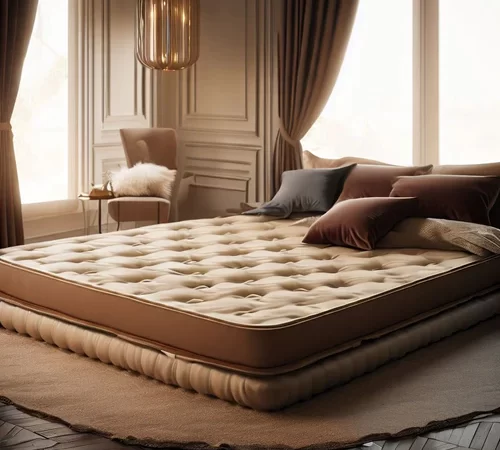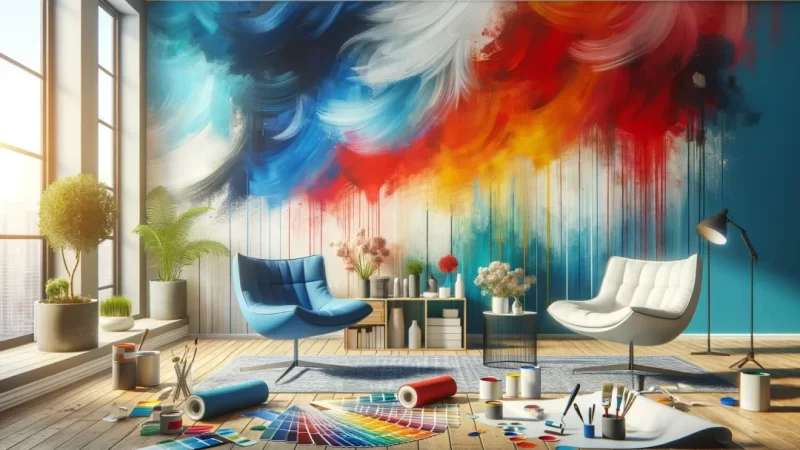Interior Design Tips For Small Spaces

Designers of small spaces tend to rely on symmetry as an effective strategy for opening up rooms and making them feel larger. Moving furniture away from walls and using light colors are also useful tools in expanding any given space.
When space feels limited, it can be tempting to add too many textures and patterns, but less is often more in small homes. Following a simple color palette with just a few key statement pieces is one way of keeping things looking streamlined.
1. Think Vertically
Decorating small spaces effectively means thinking vertically in order to maximize space. Elements like floor-to-ceiling curtains and shelving create the impression that rooms are larger while adding visual interest and creating ambiance. When selecting curtains or other window treatments, choose patterns with no strong vertical lines and lighter hues for greater effect in making rooms feel larger and brighter.
Small spaces can quickly become overrun with clutter, so it is crucial to reduce it as much as possible. To do so, limit the items on tables and countertops, select scaled-down furniture pieces such as floating shelves and wall-mounted nightstands and take advantage of vertical space with wall mounted nightstands – these expert interior design tips for small spaces will keep your cozy home feeling open and spacious!
2. Maximize Your Lighting
Small rooms present interior designers with an additional challenge when trying to achieve interior design excellence, yet it is possible to transform tight spaces into gorgeous living areas using just a few tips and tricks.
Lighting plays an integral part in creating an impression of space, making a room seem larger. Mirrors are popular design elements as they reflect light back into the room to make it feel larger; wall sconces and table lamps also help add depth and dimension.
Additionally, using modern wall paint colors with pops of color and adding home decor items with mirrors or glass surfaces are simple home staging techniques that can visually expand rooms. Finally, adding personalized touches such as patterned accents or other personalization features will add the final touches of style and sophistication to any room.
3. Take Advantage of Walls
Wall decor can make your space seem larger by filling any empty corners. Hang a large mirror to visually expand a room, or lean antique champagne buckets against the wall for stylish flatware storage and extra style points.
Small spaces offer ample opportunity for bold colors, prints and textures; just make sure there are enough neutral elements present to balance out the design. Patterned furniture, rugs or art can also help add visual interest without overpowering the room.
Solid colors can create the illusion of space in small rooms, while subdued patterns add texture and continuity. Proportion is also important; over-sized pieces may overwhelm, while proportional furnishings with clean and clutter-free appearance help make rooms appear larger.
4. Add Natural Elements
Designing for small spaces often means including natural elements like wood, stone or plants to create a soothing ambience. Their natural textures and hues add depth while simultaneously creating an atmosphere of peace and equilibrium in any given room.
Add earthy tones into your design with walls painted in greens, browns or tans; or try decorating with nature-inspired hues such as the deep blue of lakes and oceans to evoke an atmospheric and peaceful ambience.
Mirrors can reflect light and visually increase the size of a room by reflecting it, amplifying its size, and providing storage through shelves or mirror galleries on walls. By following these simple tips you will transform your small home into an inviting living space that feels large on style!
5. Keep It Simple
Finding the appropriate balance when designing for small spaces is crucial when creating designs that make an impressionful yet cozy atmosphere. You don’t want too much furniture and decor that makes the room seem cramped or congested, yet don’t want to skimp when it comes to bold colors and prints that add visual interest.
Consistency of color scheme can help create the feeling of openness. White walls are classic, but other hues work just as well. Painting insets like wall nooks and ceilings with bolder hues will draw the eye upward when combined with light-colored furniture; you don’t have to shy away from bolder accents like throw pillows or picture frames though; just make sure your main pieces remain neutral in tone.







